Oleificio Di Berardino Gesulmino e Figli snc ©

Oil mill
The exploitation of the LEOPARD multi-phase decanter from Pieralisi gives our oil mill high standard in matter of innovation, competitiveness and respect for the environment:
Superior quality of the extracted oil without water addition
One of the highest yield on the market
Reduced consumption of energy and water
The technology of the multi-phase decanter has been developed in order to avoid the addition of water to the olive paste during the extraction process. As a consequence, it produces as side products a dehydrated pomace suitable for pellet production and the olive pulp named patè, ideal as food supplement or for sheep feeding.
All this allows the reduction of the environmental impact of the oil industry as well as an enriched polyphenol content in the extra virgin olive oil obtained. In fact, these antioxidants are water-soluble and usually washed off in the extraction with water, but in this case they are retained in the oil itself.
To find out more about the characteristics of the LEOPARD multi-phase decanter from Pieralisi click here.
Olive oil extraction process
In our oil mill the superior quality extra virgin olive oil is obtained by cold pressing and it undergoes only mechanical methods, ensuring the preservation of its properties such as color, smell and taste.
The olive oil extraction process in an oil mill equipped with a modern continuous cycles system like ours is divided in five steps.
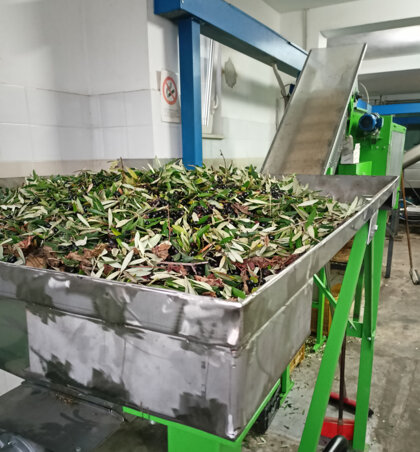
Olives cleaning
The first step is the removal of small branches and leaves from the
olives. They are loaded into a collection tank and carried by an elevator belt into a deramifier and a defoliator.
However, we recommend the farmers to remove the excess of branches and leaves, earth and above all metal objects. They can damage our machines as well as compromise the final quality of the oil.

Milling
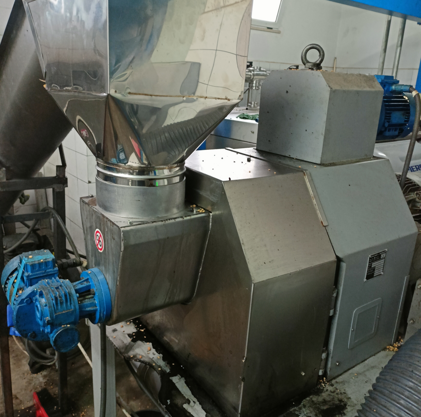
The drupes are crushed with mechanical methods to allow the oil drops to escape from the vegetable tissue.
The oldest method involved the use of one or more stone wheels defined mullers, which repeatedly crush and mix the olives for about 20 minutes.
Currently, in our oil mill, the olives are pressed by a hammer crusher equipped with a double grill. The hammers rotate at high speed (1400 rpm) and crushes the olives in few seconds, breaking down the pulp cells effectively.

Kneading
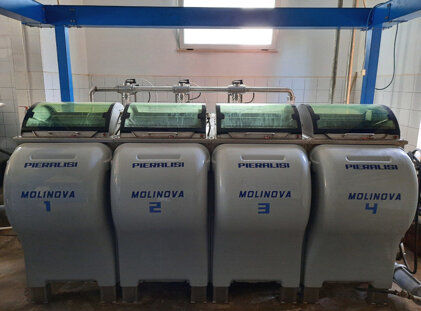
The olive paste is slowly and continuously mixed for about 30/40 min.
This step allows the disruption of the water-oil emulsion. Moreover, it promotes the aggregation of the oil micelles in bigger and bigger drops that will be easier combined in the extraction process.
The kneading is carried out in watertight stainless steel tanks in order to reduce the exposure of the olive paste to the oxygen in the air. In addition, the internal temperature is controlled to never exceed 27 °C, in order to preserve the oil properties.

Extraction
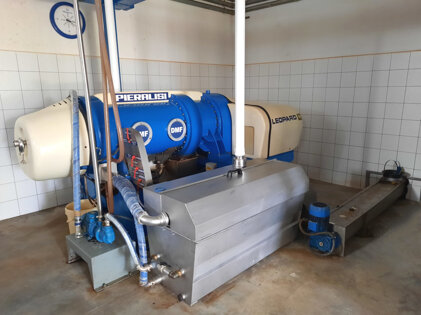
Once the oil drops extracted from the pulp have coalesced, the olive paste is centrifuged. Thanks to the latest generation Leopard multi-phase decanter, the olive paste is separated into three different fractions according to their specific weight: crude oil, patè and pomace.
The waste is represented by the patè (skins and part of the pulp dispersed in the vegetation water of the olives) and pomace (wet solid fraction containing pulp and kernels).
Lorem ipsum dolor sit
Integer ac vehicula eros, sed dictum sapien. Donec dignissim porttitor ante, sit amet placerat dui. Donec mollis vel arcu et efficitur.

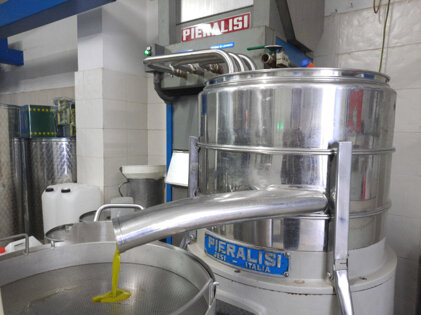
Separation
The final step involves the removal of the residual vegetation water from crude olive oil.
The separation is carried out by mean of a vertical centrifugal separator, that rotates at about 6000-6500 rpm.
The crude oil is inserted from above and it is purified from water and small solid impurities because of their different specific weigth.
Oleificio Di Berardino Gesulmino e Figli snc ©